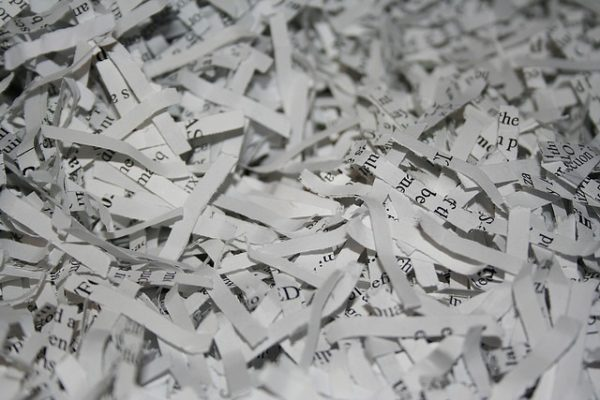
The saboteur often needs to restore the contents of a document that was accidentally or deliberately damaged. And this must be done with the help of elementary improvised means. Naturally, where does he get the sophisticated forensic equipment from?
Torn document
First, put together all the pieces of the destroyed document. If scraps are thrown into the basket or trash can, make sure all parts are collected.
Then place all the pieces on a horizontal mirror or just a piece of glass. Based on the configuration of the breaks, restore the location of the individual fragments. And put them together. The easiest way to do this is by first selecting the four corner pieces - they are the easiest to notice in the total mass. Lay them out in four corners, and then proceed as when assembling "jigsaw puzzles".
When the document is assembled, make sure that each piece is in the correct position and that the top-to-bottom and face-to-wrong ratio is observed. Take clear tape and glue these discrete pieces together. It is not necessary to glue each piece individually - you can glue it through with long strips. It turns out not very aesthetically pleasing, but quickly and quite readable.
Documents filled with ink, stamp ink, etc.
It is necessary to have several light filters or colored glasses and a lantern. Let's say the text written with purple paste is flooded with red ink. In a dark room, place the document on the table, place the red filter on the lantern, and illuminate the damaged text with red light. Surprisingly, the red paint becomes transparent and the text is clearly visible through it! It is desirable that the shade of the filter is as close as possible to the shade of the fill. Naturally, if the text is filled with blue paint or ink, then you must use a blue filter. The hardest part is when the color of the text and the fill are identical.
Pale, faded, washed out, old documents
Restored with contrasting light. We do everything as in the previous one, but exactly the opposite! If the text is written in faded blue ink, then we illuminate it with red light, if with red, then green. When polar colors are added together, a contrasting color is formed, and the inscription becomes more visible. Often lighting with an ultraviolet lamp also helps. You can use a lamp from a currency probe.
Writing in a notebook on a torn piece of paper
Her print remains on the bottom sheet! It becomes noticeable when illuminated by oblique beams. Or lightly dust the sheet with graphite powder, shake and shake off. If you have access to computer hardware, you can use a scanner and Adobe Photoshop - just increase the contrast of the background and play with the levels.
Unbroken ash of burnt sheets
It usually leaves a clear imprint of text that can be easily read. It is much more difficult if the sheet is previously crumpled. Such an ashy lump must be broken very carefully and at least fragments of the text must be read.
